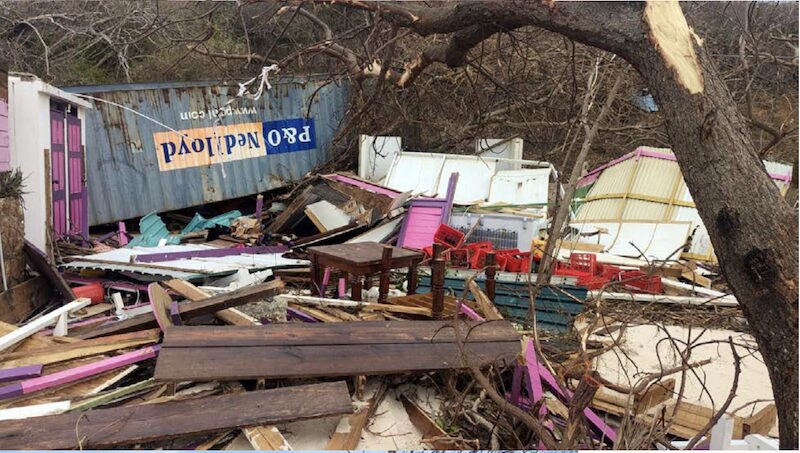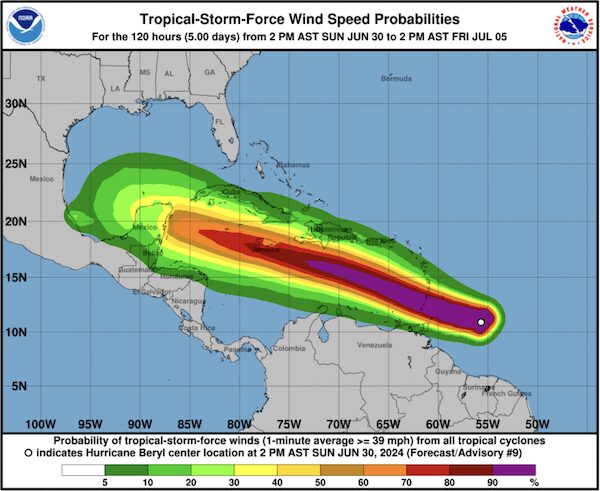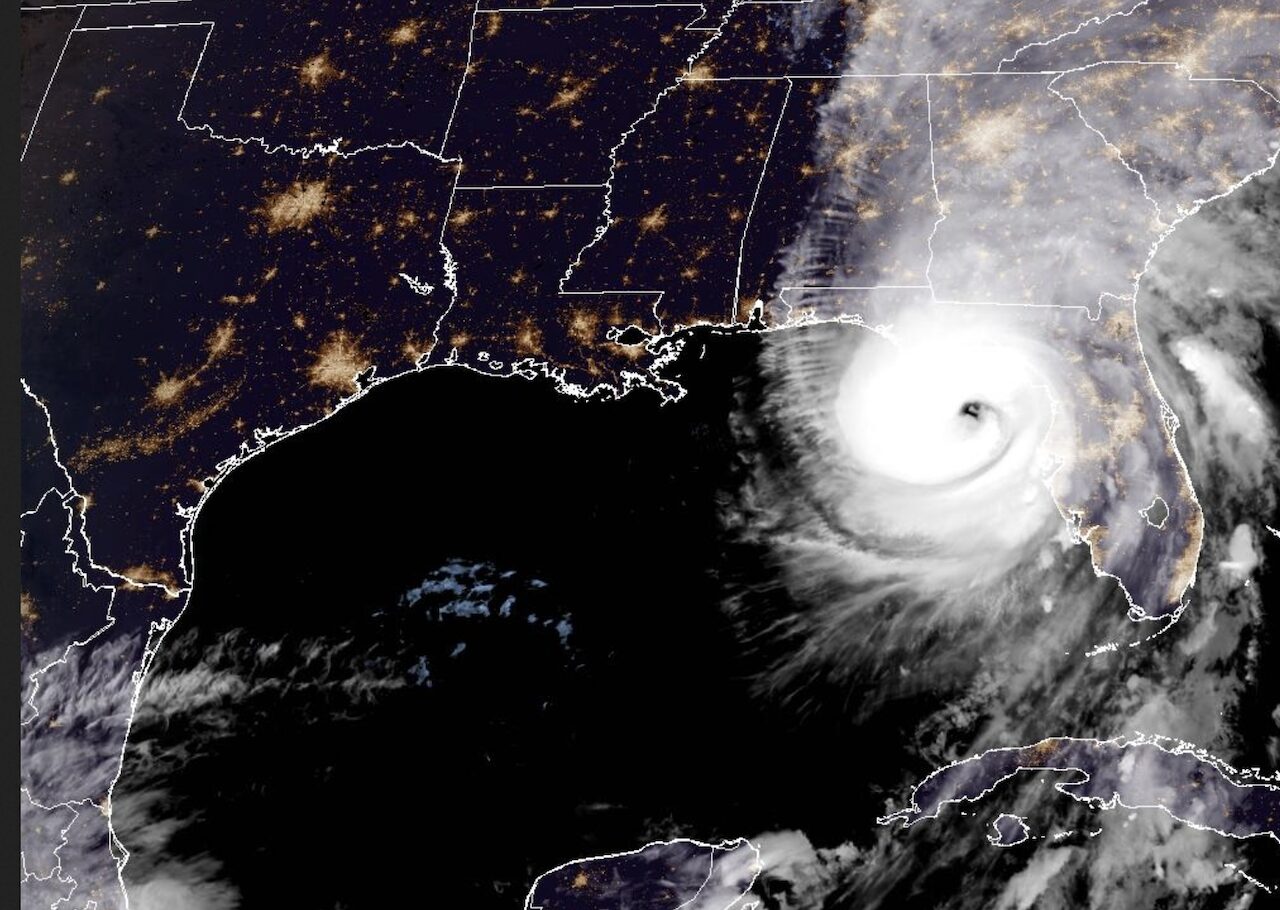Atlantic Hurricane Season 2025: Above Normal Activity Predicted
The Atlantic hurricane season officially runs from June 1 to November 30 each year, with a long-term average (based on the past three decades) of roughly 14 named storms, seven hurricanes,and three major hurricanes. However, climate experts warn that 2025 could exceed these figures, mirroring or surpassing recent seasons that produced multiple high-intensity cyclones.
Published 7 months ago
Source: G Captain and Colorado State University
The Forecast Puzzle
A major piece of the seasonal forecast puzzle is the El Niño–Southern Oscillation (ENSO). In an El Niño phase, Pacific Ocean waters near the equator warm significantly, typically bringing increased wind shear over parts of the Atlantic. This shear can disrupt forming storms, reducing their frequency and intensity.


With a neutral or weak La Niña pattern, on the other hand, the Atlantic faces lower wind shear, making it easier for storms to form and intensify. Colorado State University (CSU) expects only a 13% chance of El Niño conditions emerging by peak season (August–October), meaning wind shear is likely to remain modest and the ocean environment primed for hurricane development.
CSU tropical cyclones predictions
- 17 named storms
- 9 hurricanes
- 4 major hurricanes (Category 3 or higher)
They anticipate a 51% chance of a major hurricane striking the U.S., compared to the historical average of 43%.
Weather forecasting service AccuWeather says 2025 is s poised to be a turbulent yea, predicting 13 to 18 storms and warning of hurricanes that can rapidly strengthen leading up to landfall.
AccuWeather predictions:
- 13 to 18 named storms
- 7 to 10 hurricanes
- 3 to 5 major hurricanes
- 3 to 6 possible direct U.S. impacts
These estimates differ somewhat in the total number of storms, yet both sources agree that conditions are ripe for potentially explosive cyclones. Warm ocean waters across the Atlantic, Caribbean, and Gulf could accelerate storm growth, making it essential for coastal residents and maritime operators alike to remain vigilant.
NOAA National Weather Service forecasters at the Climate Prediction Center are NOAA will issue their first seasonal hurricane forecast for 2025 in late May.
Reviewing the 2024 Hurricane Season
Predictions for the 2024 Atlantic hurricane season had initially called for an extremely active year, in some cases predicting 20 to 25 named storms with multiple major hurricanes. By the final count, 18 named storms formed—a slight dip from early expectations. However, what the season lacked in quantity, it more than made up for with several powerful hurricanes that collectively caused an estimated $200 billion in damage.
Hurricane Beryl (June 2024)
Hurricane Beryl made headlines by forming unusually early, in the first week of June, defying typical seasonal patterns where the strongest storms often cluster between August and October. Beryl’s swift jump to hurricane status caught many by surprise, showing how ocean heat can fuel storm growth earlier in the season than expected. While Beryl’s winds mainly stayed offshore, it caused heavy rain and coastal flooding in the Windward Islands.
Despite Beryl’s opening barrage, late August into early September brought a quiet spell—one of the calmest stretches recorded during what is typically the heart of hurricane season. This gave some a false impression that the season might taper off quietly, but the lull was more of a reprieve than a prediction of what was to come.


Hurricane Helene (September 2024)
Hurricane Helene developed shortly after the 2024 season’s dormant phase, becoming a Category 4 storm in just a few days. Making landfall along the Southeastern U.S. coast around early September, Helene unleashed extreme flooding, powerful winds, and even tornado outbreaks far inland—ultimately becoming one of the deadliest U.S. hurricanes in modern history. Tragically, Helene claimed at least 250 lives, primarily due to inland flash floods and storm surges in low-lying areas.


Hurricane Milton (October 2024)
As the season approached its usual wind-down, Hurricane Milton formed in the Gulf of Mexico and rapidly intensified in under 36 hours. Milton’s landfall in Florida brought widespread flooding and more than 30 tornadoes, devastating communities still reeling from Helene’s impacts. Evacuations saved lives, but property damage soared, adding to the 2024 season’s cumulative costs.
Looking Ahead
While the 2024 hurricane season ultimately tallied fewer storms than projected, it left no doubt about the destructive power a handful of major cyclones can wield. For 2025, CSU and AccuWeather both expect conditions that favor at least an average (and likely above-average) number of strong storms. Even a moderate total storm count could yield multiple Category 3+ hurricanes, posing threats to offshore operations, maritime and harbor workers, and coastal communities.
………………………
Related News:
- Dynamic Hurricane Season Predicted for Atlantic in 2025 – Accuweather
- Forecasters Predict Active Atlantic Hurricane Season in 2025 – Yale Climate Connections
………………………
Related Links:
- Colombia State University – Atlantic Hurricane Season Forecast 2025
- National Hurricane Center Products and Services Updates for 2025 Season
- Noonsite Weather Resources – Hurricanes and Tropical Cyclones
………………………
© 2025 Noonsite. This content was edited by Noonsite. Do not reproduce without permission. All rights reserved.
The opinions expressed in this article are the author’s own and do not reflect the view of Noonsite.com or World Cruising Club.
Find out all news, reports, links and comments posted on Noonsite, plus cruising information from around the world, by subscribing to our FREE monthly newsletter. Go to https://www.noonsite.com/newsletter/.
Related to following destinations: Abaco Islands, Andros, Anguilla, Antigua, Antigua & Barbuda, Aruba, Bahamas, Barbados, Barbuda, Belize, Bequia, Bermuda, Berry Islands, Bimini Islands, Bonaire, British Virgin Islands, Cat Island, Cayman Brac, Conception Island, Crooked Island District, Cuba, Curacao, Dominica, Dominican Republic, East Coast (Mexico), East Coast (USA), Eleuthera, Exuma, Florida, Grand Bahama Island, Grand Cayman, Great Inagua, Grenada, Gulf Coast, Haiti, Half Moon Cay, Isla de Mona, Jamaica, Jost van Dyke, Little Cayman, Long Island, Main Island, Martinique, Mayaguana, Mexico, Mustique, Nevis, New Providence, Other Islands (BVI), Out Islands, Puerto Rico, Saba, Sint Maarten, Spanish Virgin Islands, St Kitts, St. Barts, St. Croix, St. John, St. Kitts & Nevis, St. Lucia, St. Martin, St. Pierre & Miquelon, St. Thomas, St. Vincent, St. Vincent & the Grenadines, Statia, The Grenadines, Tobago, Tortola, Trinidad, Trinidad & Tobago, Turks & Caicos, US Virgin Islands, Virgin Gorda
Related to the following Cruising Resources: Hurricanes and Tropical Cyclones, Weather








